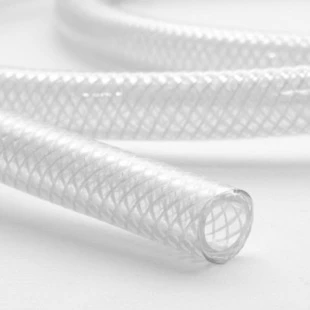Choosing the Right LPG Gas Hose for Safe and Efficient Use
Understanding LPG Gas Hoses Safety, Installation, and Maintenance
Liquefied Petroleum Gas (LPG) is widely used as an energy source for heating, cooking, and powering vehicles. Its versatility makes it essential for both residential and commercial applications. However, the use of LPG comes with certain risks that necessitate the use of high-quality components, among which LPG gas hoses play a crucial role. This article explores the features, types, safety measures, installation guidelines, and maintenance of LPG gas hoses.
What is an LPG Gas Hose?
An LPG gas hose is a flexible tube designed to transport liquefied petroleum gas from one point to another. These hoses are typically made from materials that can withstand the pressures and temperatures associated with LPG. They are often reinforced with textiles for added strength and durability and are available in various lengths and diameters to suit specific applications.
Types of LPG Gas Hoses
There are several types of LPG gas hoses available in the market, each suited for different purposes
1. Rubber LPG Hoses These hoses are made from synthetic rubber, providing excellent flexibility and resistance to weather exposure. They are commonly used in residential settings for connecting gas appliances.
2. PVC LPG Hoses Polyvinyl Chloride (PVC) hoses are less flexible but offer good resistance to abrasion and chemicals. They are often used in temporary installations or less demanding environments.
3. Stainless Steel Braided Hoses These hoses provide enhanced durability and are generally used for high-pressure applications. The stainless-steel braid offers protection against physical damage, while the inner lining is compatible with LPG.
4. High-Pressure Hoses Designed for applications requiring higher stress tolerance, these hoses are typically used in commercial and industrial settings.
Safety Measures
Safety is paramount when dealing with LPG, as leaks can lead to explosions or fires. Here are key safety measures to consider
- Regular Inspection Inspect hoses regularly for wear, cracks, or leaks. Replace any damaged hoses immediately to prevent hazardous situations.
- Proper Installation Ensure that hoses are installed according to manufacturer guidelines. Avoid sharp bends, kinks, or stretching, which can weaken the hose and lead to failure.
- Use Approved Hoses Always use hoses that are certified for LPG use. These hoses are specifically designed to handle the properties of LPG and comply with safety standards.
lpg gas hose

- Secure Connections Use the appropriate fittings and clamps to secure hose connections. Loose connections can lead to leaks, posing severe safety risks.
Installation Guidelines
Installing LPG gas hoses requires careful attention to detail. Here are some guidelines to follow
1. Measure Accurately Before installation, measure the distance between the LPG source and the appliance to ensure you purchase a hose of the appropriate length.
2. Select the Right Diameter The hose diameter should match the gas appliance requirements to ensure proper flow and pressure.
3. Positioning Avoid placing hoses in areas where they may be exposed to sharp objects or high heat. Instead, run hoses along walls or through designated channels.
4. Testing After installation, conduct a leak test using a soap solution. Apply the solution to all connections and joints; bubbling indicates a leak that must be addressed before use.
Maintenance of LPG Gas Hoses
Maintaining LPG gas hoses is essential for safety and longevity. Here are some maintenance tips
- Keep Hoses Clean Regularly clean hoses to remove any dirt, grease, or debris that can cause wear and reduce visibility.
- Check for Signs of Aging Hoses have a lifespan and should be replaced according to manufacturer recommendations, or sooner if signs of aging appear, like discoloration or brittleness.
- Store Properly When not in use, store hoses in a cool, dry place away from direct sunlight. Avoid coiling hoses tightly, as this can create kinks and weaken the material.
- Professional Servicing Consider having a professional servicing of your LPG system, including hoses, at regular intervals for a thorough inspection.
Conclusion
LPG gas hoses are critical components in the safe and efficient use of liquefied petroleum gas. By understanding the types available, adhering to safety measures, following proper installation guidelines, and committing to regular maintenance, users can significantly reduce the risks associated with LPG. Prioritizing quality and safety will ensure that your LPG system operates smoothly and effectively, ultimately providing comfort and energy security in your home or business.
-
Unrivaled Performance and Applications of PU Pneumatic Hoses and TubesNewsJun.11,2025
-
The Transparent World of Industrial Tubing and Hosing SolutionsNewsJun.11,2025
-
The Intricate World of Pneumatic Conduits: Tubes and HosesNewsJun.11,2025
-
The Dynamic Landscape of Pneumatic Conduits: Unraveling Key ComponentsNewsJun.11,2025
-
The Diverse Applications and Significance of Transparent PVC TubingNewsJun.11,2025
-
High - Pressure Pneumatic Tubing and Systems: An In - Depth LookNewsJun.11,2025














